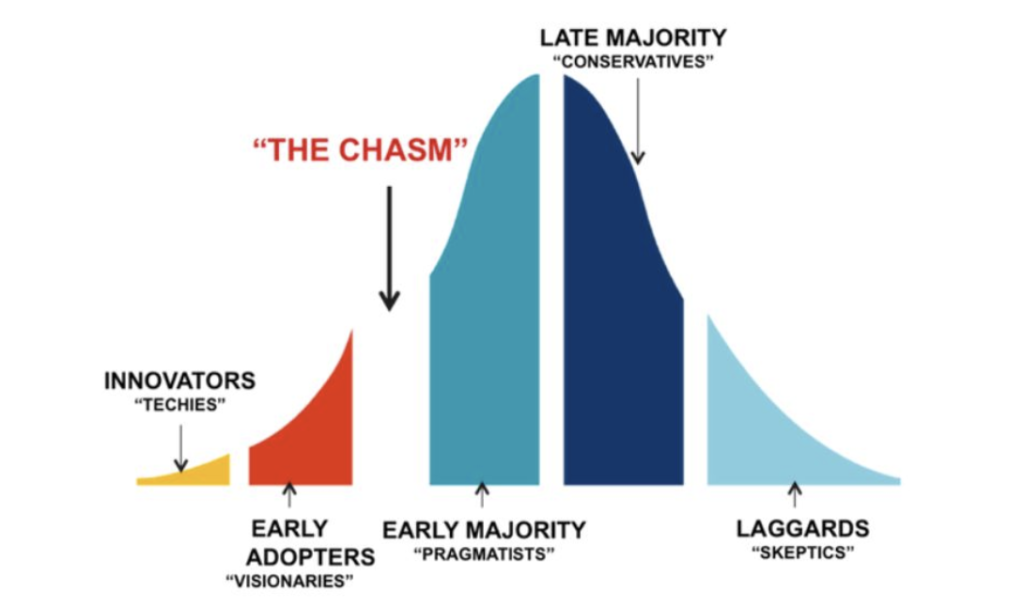
To borrow the title of Geoffrey Moore’s famous book, what is the best way to “cross the chasm”? Eliminate the chasm.
So many early-stage B2B startups focus on the “low-hanging fruit.” It seems logical because they need to show rapid growth. But many then fall into the chasm when there is no more low-hanging fruit because they bothered to plant any more seeds to grow more fruit for the future.
This is where I combine the research findings of Byron Sharp, Jenni Romaniuk, and the Ehrenberg-Bass Institute with those of Les Binet and Peter Field.
According to EBI, roughly 5% of B2B buyers are “in market” and actively looking for a solution and 95% are “out of market” and not looking at all.
Early-stage startups that sell “widget software” will typically do SEO and Google paid search to get found by people who are looking for “widget software.” And they get great results and high growth rates — because they are focusing completely on the 5% who are already “in market.”
But what often happens next? Falling growth rates and fewer leads because you’ve saturated that 5% and the remaining 95% are a lot less interested because they are not even actively looking for a solution to a hypothetical problem that they have not encountered yet. You can target them organic and paid search, but the conversion rates will be a lot lower.
Remember: Paid search is actually distribution, not direct response advertising. You’re paying Google to put your product on display whenever people “walk” down a specific aisle (the search term) to see the options. What does that mean? If you also put your product in an aisle that is not an exact match for it, few people walking down that aisle will buy it. (This is one reason of many why ad spend does not “scale” as VCs want — there are limits to effectiveness.)
The answer is to have a two-pronged plan. Apply Binet and Field’s 60/40 rule (on average) to each group. From the beginning, spend 40% (direct response) on the 5% who are “in market” and will be likely to buy now.
Spend 60% (brand advertising and publicity) on the 95% who are not “in market” to get them to remember you (mental availability) when they are looking for a product in the future. When a buying committee comes up with a short list of options at the beginning, they will likely not buy you if you’re not on that short list.
But there is a caveat to this approach: VCs, CEOs, CMOs, and salespeople will need to understand and accept that there will be fewer leads at the beginning. But that is how you ensure stable, long-term growth over time — instead of flying so high and so quickly that you run out of fuel and crash into the chasm.
Bonus: Once you’re able to do proper quantitive research and market segmentation, you can then also know which market segments have more consideration and preference for you over others. You can then target them with direct response while continuing the brand advertising among the other segments. (That’s inspired by James Hurman.)